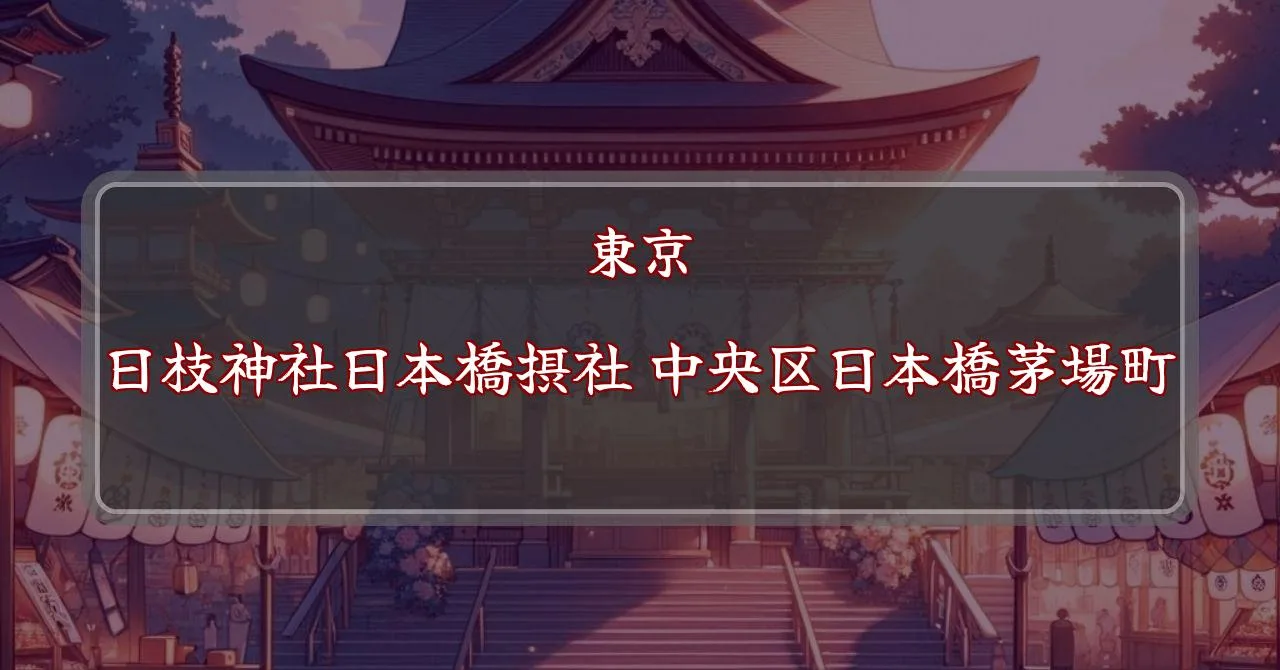日本橋日枝神社例祭2025:縁起の良い猿と賑やかな茅場町!
イベントの概要
東京都中央区日本橋茅場町に鎮座する日本橋日枝神社(日枝神社日本橋摂社)の例祭が、2025年度も開催されます。 日枝神社といえば、神使である猿が有名ですが、この例祭では、茅場町というビジネス街の喧騒の中、古くからの伝統と現代の活気が融合した独特の雰囲気を味わうことができます。 例祭は、日枝大神をはじめとする数々の神々への感謝と、地域住民の繁栄を祈念する神事として、古くから大切に受け継がれてきました。 神輿渡御や神楽奉納といった伝統的な神事のほか、地域住民による様々な催し物も予定されており、大人から子供まで楽しめるイベントとなっています。 特に、近年注目を集めているのは、神社境内に鎮座する明徳稲荷神社の存在です。 元禄年間から続く歴史を持つこのお稲荷様は、関東大震災や東京大空襲を乗り越え、現在も人々の信仰を集めています。 例祭では、明徳稲荷神社も特別な祈祷が行われ、商売繁盛や家内安全を祈願する参拝客で賑わいます。 また、神社では「かぶ守」と呼ばれる、蕪の形をしたユニークなお守りも授与されており、株価上昇や開運を願う人々から人気を集めています。 ビジネス街に位置する神社ならではの、独特の雰囲気と伝統的な神事、そして現代的な要素が融合した、忘れられない一日となるでしょう。 2025年度の例祭の詳細な日程やスケジュールは、日本橋日枝神社の公式ウェブサイトでご確認ください。
基本情報
- 開催日: 2025年6月13日(隔年開催のため、2024年は開催されません。公式ウェブサイトで最新情報をご確認ください)
- 開催時間: 午前9時~午後4時頃(神事の進行状況により変動する場合があります。公式ウェブサイトで最新情報をご確認ください)
- 住所・開催場所: 東京都中央区日本橋茅場町1-6-16 日本橋日枝神社(日枝神社日本橋摂社)
- アクセス: 東京メトロ日比谷線 茅場町駅より徒歩すぐ、JR総武線・東京メトロ東西線 日本橋駅からも徒歩圏内
- 問い合わせ先: 日本橋日枝神社(公式ウェブサイトに連絡先情報が掲載されています)
主なイベント
日本橋日枝神社例祭では、神輿渡御や神楽奉納といった伝統的な神事から、地域住民参加型の催しまで、様々なイベントが開催されます。 ビジネス街に位置する神社ならではの、現代的な要素も取り入れられた、活気あふれるお祭りです。 神々への感謝と地域社会の繁栄を祈念する、盛大な祭典にご期待ください。
神輿渡御
例祭のハイライトと言えるのが神輿渡御です。 神輿は、日枝神社の御祭神である日枝大神を乗せ、氏子地域を巡行します。 神輿の威勢の良い掛け声と、沿道からの盛大な拍手や応援が一体となり、神聖な雰囲気と活気に満ちた祭りの雰囲気を醸し出します。 神輿渡御のルートや時間は、当年の状況によって変更される可能性がありますので、公式ウェブサイト等で最新情報をご確認ください。 また、神輿を担ぐ体験に参加できる機会がある場合もありますので、興味のある方は神社への問い合わせをおすすめします。
神楽奉納
神楽奉納は、神々への奉納舞として、古くから伝わる神聖な儀式です。 優雅で力強い舞は、神々への敬意と、人々の願いを込めた神聖な時間となります。 神楽の演目や時間については、例祭のプログラム等で確認できます。 伝統的な神楽の調べと舞に酔いしれ、神聖な雰囲気に包まれるひとときをお楽しみください。
その他の催し物
神輿渡御や神楽奉納以外にも、地域住民が企画・運営する様々な催し物が予定されています。 屋台の出店や、子供向けのイベントなど、年齢を問わず楽しめる企画が盛りだくさんです。 具体的な内容については、例祭が近づくにつれて、神社の公式ウェブサイトや広報物などで発表されますので、そちらをご確認ください。 例年、地域住民の温かいおもてなしと、活気あふれる雰囲気で、多くの参拝客を魅了しています。
- 屋台の出店(軽食、飲み物など)
- 子供向けイベント(ゲーム、工作など)
- 地域住民によるパフォーマンス(音楽演奏、踊りなど)※内容は年によって異なります。
明徳稲荷神社の祈祷
日本橋日枝神社境内には、明徳稲荷神社が鎮座しています。 この神社では、例祭に合わせて特別な祈祷が行われ、商売繁盛や家内安全を祈願する参拝客で賑わいます。 古くからの歴史と、現代社会における人々の願いが交差する、特別な空間となっています。 明徳稲荷神社への参拝も、例祭の重要なイベントの一つと言えるでしょう。
アクセス方法
日本橋日枝神社(日枝神社日本橋摂社)は、東京メトロ日比谷線茅場町駅より徒歩すぐの場所に位置しています。 周辺にはオフィスビルが立ち並びますが、神社の境内は静かで落ち着いた雰囲気です。 JR総武線・東京メトロ東西線 日本橋駅からも徒歩圏内であり、公共交通機関を利用して容易にアクセスできます。 茅場町駅からは、地上に出るとすぐに神社の参道が見えてくるため、迷う心配も少ないでしょう。 日本橋駅から徒歩で来られる場合、茅場町方面へ向かうルートを事前に確認しておくとスムーズです。 周辺には、多くの飲食店や商業施設もありますので、例祭前後には、食事や買い物を楽しむこともできます。
- 東京メトロ日比谷線 茅場町駅より徒歩約1分
- JR総武線・東京メトロ東西線 日本橋駅より徒歩約10分
駐車場情報
日本橋日枝神社周辺には、神社専用の駐車場はございません。 近隣の有料駐車場をご利用ください。 例祭開催日は、周辺道路の交通規制や駐車場の混雑が予想されますので、公共交通機関のご利用を強くおすすめします。
- 近隣のコインパーキングをご利用ください。(台数に限りがあるため、満車の場合もあります)
その他の情報
例祭当日は、動きやすい服装でお越しください。 持ち物については、特に指定はありませんが、熱中症対策として、飲み物や帽子を持参することをおすすめします。 天候に左右されるイベントではありませんが、雨天の場合は、雨具をご用意ください。 また、例祭は多くの参拝客で賑わうため、混雑を避けるため、時間に余裕を持って来場することをおすすめします。



